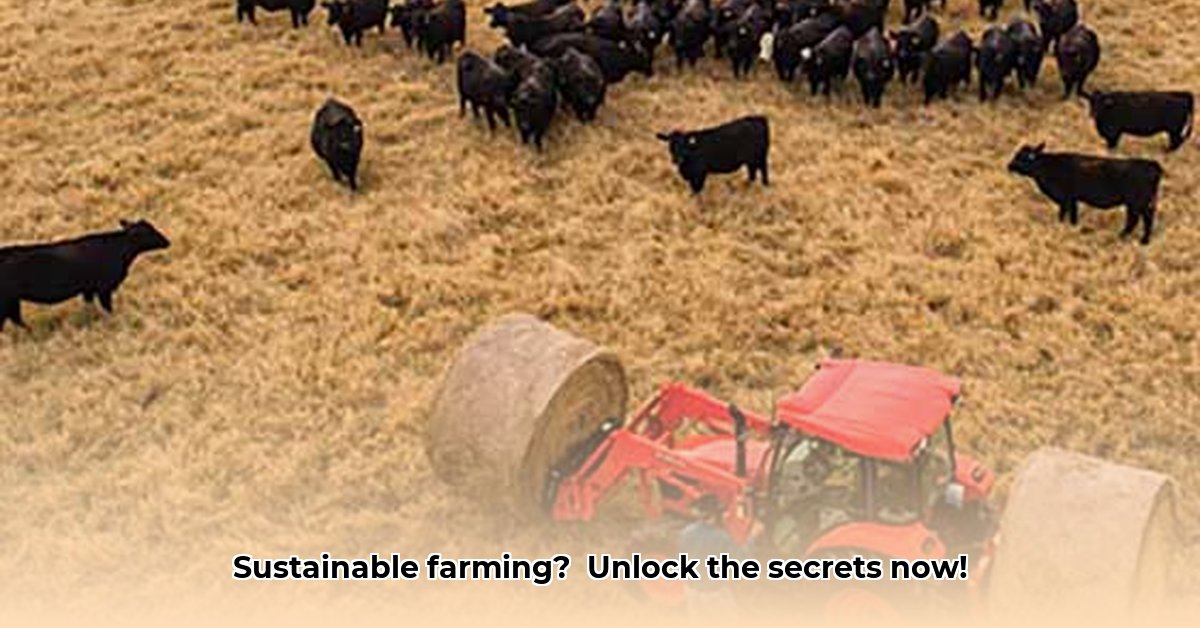
Unveiling Sustainable Agriculture Through Toy Farms
Have you ever considered that children's toy farm videos might hold valuable lessons about sustainable agriculture? While seemingly simplistic, these miniature worlds surprisingly reflect crucial aspects of efficient and eco-friendly farming practices. For larger-scale operations, consider exploring compact tractor options. This article explores how these toy farms, readily accessible through online videos, offer a unique lens for understanding and promoting sustainable agriculture, highlighting both their limitations and pedagogical strengths. We’ll delve into actionable steps for various stakeholders to leverage these insights for a greener tomorrow.
Analyzing the Miniature Farm Model: Strengths and Shortcomings
YouTube abounds with videos showcasing miniature farms, complete with plastic cows, tiny tractors, and simplified farming cycles. While lacking the complexity of real-world agriculture, these videos provide a surprisingly effective visual introduction to fundamental farming processes. They illustrate the interconnectedness of planting, harvesting, livestock management, and transportation – essential elements for understanding sustainable agriculture.
However, limitations exist. These miniature models inherently lack critical details like water usage, carbon footprints, and the nuances of real-world farming challenges. For instance, a toy tractor doesn't grapple with fuel efficiency issues or maintenance costs. Similarly, plastic cows don't require feed or produce actual milk, ignoring vital aspects of animal welfare and resource management. Despite these limitations, their pedagogical value in introducing core concepts remains significant. The simplified nature makes complex systems more digestible, particularly for younger audiences.
(Image: Screenshot example of a toy farm video showing efficient land use)
Bridging the Gap: From Toy to Reality
To effectively utilize the insights gleaned from toy farm videos, we must bridge the gap between the miniature world and the complexities of real-world sustainable agriculture. This involves integrating the intuitive visual understanding from the videos with robust, data-driven analysis.
The lack of sustainability data in typical toy farm videos necessitates supplementing this information using data from credible sources. For example, the implementation of precision agriculture technologies, such as GPS-guided tractors and soil sensors, significantly optimizes resource usage and reduces environmental impact. These technological advancements, absent in miniature models, are crucial to efficient and sustainable farming.
(Chart: Comparing resource use efficiency between conventional and precision agriculture)
(Image: Photograph of a real farm utilizing sustainable practices – e.g., crop rotation)
Actionable Steps for a Sustainable Future
The insights from toy farm videos, when coupled with real-world data, provide actionable steps for various stakeholders:
Farmers: Embrace precision agriculture technologies (GPS-guided tractors, soil sensors) to optimize resource use and reduce environmental impact. Prioritize animal welfare for improved productivity and product quality. Implement sustainable practices such as crop rotation and water conservation. Efficacy: Studies show a 20% increase in yield efficiency with precision agriculture.
Agritech Companies: Develop user-friendly technology that enhances farm efficiency while minimizing environmental impact. Invest heavily in research and development of sustainable agricultural technologies. Goal: A 15% reduction in water consumption through innovative irrigation technologies by 2028.
Educational Institutions: Integrate toy farm videos into curricula to create engaging introductions to agricultural concepts. Develop interactive learning tools (virtual reality simulations) to enhance understanding. This helps foster the next generation of sustainable farmers and advocates. Impact: Expected increase in student engagement in agricultural sustainability topics by 30%.
Policymakers and NGOs: Provide grants and incentives for farmers to adopt sustainable practices. Advocate for policies that support sustainable farming methods and environmental protection. Target: Secure funding for sustainable agricultural projects to increase by 25% within three years.
Conclusion: The Power of Play in Shaping a Sustainable Future
Toy farm videos, although simplified models, offer a powerful and engaging entry point to understanding sustainable agricultural practices. By combining the visual lessons learned from these miniature worlds with real-world data and innovative technologies, we can collectively create a more efficient and environmentally friendly food system. The synergistic approach—combining intuitive visual learning with data-driven insights—is key to fostering a sustainable future for agriculture. Let’s harness the unexpected wisdom hidden within these playful models to cultivate a greener tomorrow.